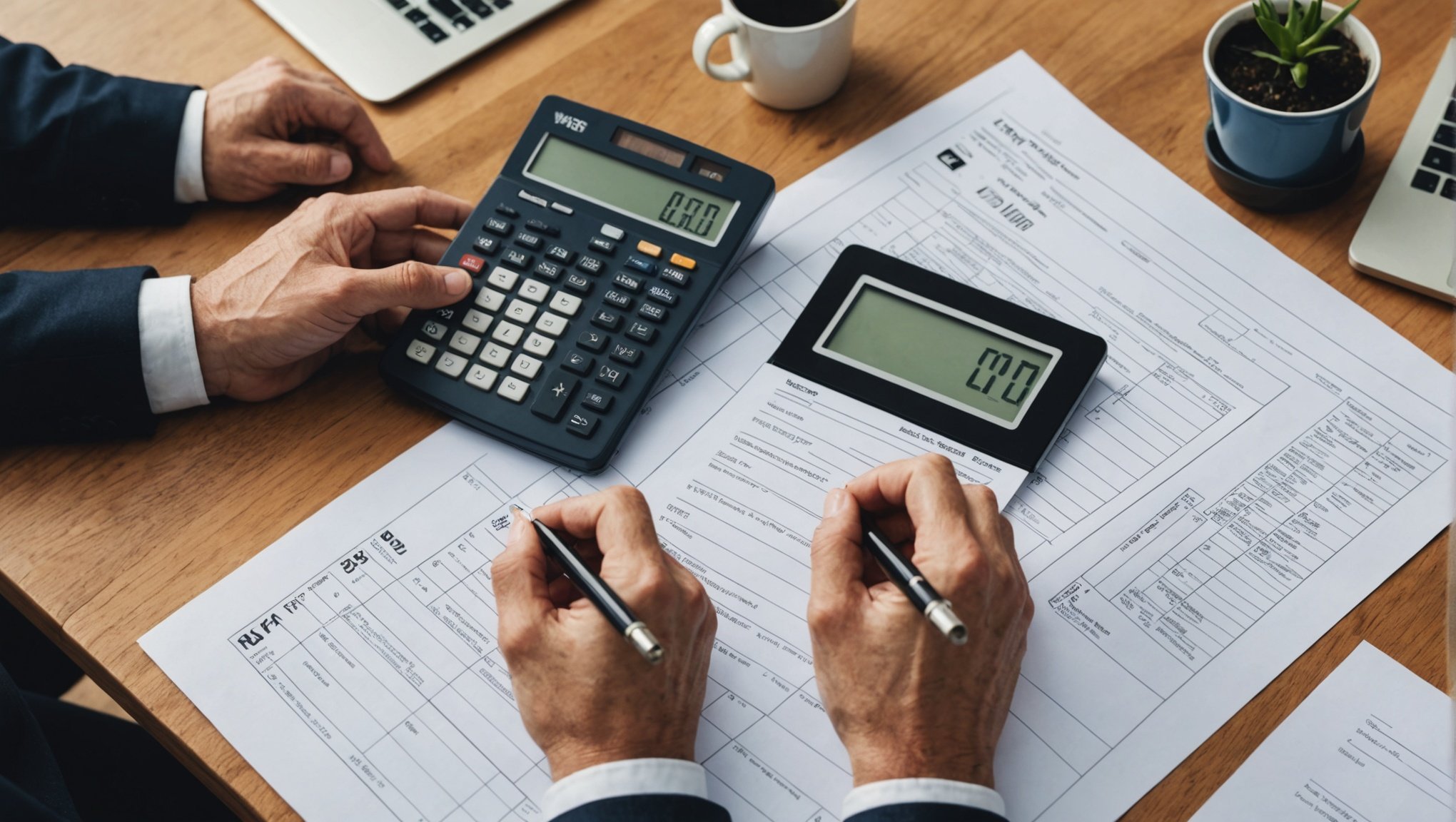Mastering VAT Filing: A Small Business Guide for UK Entrepreneurs
Navigating the complexities of Value Added Tax (VAT) can be a daunting task for small business owners in the UK. However, understanding and mastering VAT filing is crucial for maintaining compliance, managing cash flow, and ensuring the financial health of your business. Here’s a comprehensive guide to help you through the process.
Understanding VAT Basics
Before diving into the nitty-gritty of VAT filing, it’s essential to grasp the fundamentals.
Also read : Crafting a Winning Digital Marketing Plan for Small and Medium Enterprises in the UK
What is VAT?
VAT is a consumption tax levied on the value added to goods and services. It is a key source of revenue for the UK government and is administered by Her Majesty’s Revenue and Customs (HMRC).
VAT Rates
In the UK, there are three main VAT rates:
Topic to read : Unlocking gmail: the power of gmail proxy services
- Standard Rate: 20% – applied to most goods and services.
- Reduced Rate: 5% – applied to certain goods and services like children’s car seats and home energy.
- Zero Rate: 0% – applied to essentials like food, books, and children’s clothing.
VAT Threshold
To determine if your business needs to register for VAT, you must consider the VAT threshold. As of the latest updates, businesses with a taxable turnover exceeding £85,000 in a 12-month period must register for VAT. If your turnover is below this threshold, you can choose to register voluntarily, which might be beneficial if you can reclaim VAT on your purchases.
Registering for VAT
Registering for VAT is a critical step that requires careful consideration and accurate documentation.
Why Register for VAT?
Registering for VAT can be advantageous even if your turnover is below the threshold. Here are a few reasons:
- Reclaiming VAT: If your business incurs significant VAT on purchases, registering for VAT allows you to reclaim this amount.
- Credibility: Being VAT registered can enhance your business’s credibility, especially when dealing with larger clients or suppliers.
- Future Growth: If you anticipate your business growing beyond the VAT threshold, registering early can streamline your financial processes.
How to Register for VAT
To register for VAT, follow these steps:
- Online Registration: You can register online through the HMRC website. This process typically takes a few minutes.
- Required Information: You will need your business details, including your business name, address, and VAT eligibility.
- Effective Date: Your VAT registration will be effective from the date you specify, which can be up to four years in the past if you have been eligible but not registered.
### Example of VAT Registration Process
- **Step 1: Gather Information**
- Business name and address
- Business type (sole trader, partnership, limited company)
- VAT eligibility date
- Bank account details
- **Step 2: Register Online**
- Log in to the HMRC website
- Fill out the VAT registration form
- Submit the application
- **Step 3: Receive Your VAT Number**
- HMRC will issue a VAT registration number
- You will receive a VAT certificate via email or post
Record Keeping and Compliance
Accurate record keeping is the backbone of VAT compliance.
Importance of Record Keeping
Maintaining detailed and accurate records is essential for several reasons:
- HMRC Audits: HMRC may conduct audits to ensure compliance. Having thorough records can help you pass these audits smoothly.
- VAT Returns: Accurate records are necessary for filing correct VAT returns.
- Cash Flow Management: Good record keeping helps in managing your cash flow effectively by ensuring you reclaim the right amount of VAT and avoid overpaying.
What Records to Keep
Here are some key records you should maintain:
- Invoices and Receipts: Keep all invoices and receipts related to your business transactions.
- VAT Invoices: Ensure all invoices include the necessary VAT details such as the VAT number, date, and amount of VAT charged.
- Bank Statements: Keep your bank statements to reconcile your VAT returns with your financial records.
- Expense Records: Maintain detailed records of all business expenses, including those that are VAT reclaimable.
### Example of Record Keeping
| Document Type | Description |
|
|-----------------------------------------------------------------------------|
| Invoices | Detailed invoices showing VAT amount and date |
| Receipts | Receipts for all business purchases |
| Bank Statements | Monthly bank statements to reconcile VAT returns |
| Expense Records | Detailed records of all business expenses, including VAT reclaimable ones |
| VAT Certificates | Your VAT registration certificate and any other relevant VAT documents |
Filing VAT Returns
Filing VAT returns is a regular task that requires precision and timeliness.
How to File VAT Returns
Here’s a step-by-step guide to filing your VAT returns:
- Gather Information: Collect all necessary records, including invoices, receipts, and bank statements.
- Calculate VAT: Calculate the total VAT due or reclaimable based on your business transactions.
- Submit Online: Submit your VAT return online through the HMRC website. Ensure you meet the deadline to avoid penalties.
- Pay or Reclaim: Pay any VAT due or reclaim any VAT owed to you by HMRC.
Digital VAT and Making Tax Digital (MTD)
The UK government has introduced Making Tax Digital (MTD) to digitize tax processes, including VAT. Under MTD, businesses must use compatible software to keep digital records and submit VAT returns. This initiative aims to reduce errors and improve compliance.
### MTD Compliance Checklist
- **Use MTD-compatible software**
- Ensure your accounting software is MTD compliant
- Keep digital records of all VAT-related transactions
- **Submit VAT returns digitally**
- Use the software to submit your VAT returns directly to HMRC
- **Maintain digital records**
- Keep all records in a digital format for at least six years
VAT Accounting Schemes
Choosing the right VAT accounting scheme can simplify your VAT management and reduce administrative burdens.
Types of VAT Accounting Schemes
Here are a few common VAT accounting schemes:
- Standard Accounting Scheme: This is the default scheme where you charge and reclaim VAT on a transaction-by-transaction basis.
- Cash Accounting Scheme: This scheme allows you to account for VAT based on the date of payment rather than the date of invoice. It can help manage cash flow better.
- Flat Rate Scheme: This scheme simplifies VAT calculations by allowing you to pay a flat rate percentage of your turnover as VAT. However, it may not be as beneficial if you have significant VAT reclaimable on purchases.
### Comparison of VAT Accounting Schemes
| Scheme | Description | Benefits |
|
|-----------------------------------------------------------------------------|
|
| Standard Accounting | Charge and reclaim VAT on a transaction-by-transaction basis | Accurate reflection of VAT liability |
| Cash Accounting | Account for VAT based on payment dates | Better cash flow management |
| Flat Rate Scheme | Pay a flat rate percentage of turnover as VAT | Simplified VAT calculations |
Common Mistakes and Penalties
Understanding common mistakes and the associated penalties can help you avoid costly errors.
Common Mistakes
Here are some common mistakes to avoid:
- Late Submission: Failing to submit VAT returns on time can result in penalties and interest.
- Inaccurate Records: Keeping inaccurate or incomplete records can lead to errors in VAT returns.
- Incorrect VAT Rates: Using the wrong VAT rate can result in under or overpayment of VAT.
Penalties
HMRC imposes penalties for non-compliance, including:
- Late Submission Penalties: A penalty of £100 for the first late submission, increasing for subsequent late submissions.
- Inaccurate Returns Penalties: A penalty ranging from 0% to 100% of the VAT underpaid or overclaimed.
- Interest on Underpaid VAT: Interest on the amount of VAT underpaid, calculated from the due date.
### Tips to Avoid Penalties
- **Submit VAT returns on time**
- Ensure you meet the deadline to avoid late submission penalties
- **Keep accurate records**
- Maintain detailed and accurate records to avoid errors in VAT returns
- **Use the correct VAT rates**
- Ensure you use the correct VAT rate for each transaction to avoid under or overpayment
Mastering VAT filing is a crucial aspect of running a small business in the UK. By understanding the basics of VAT, registering correctly, maintaining accurate records, filing returns timely, and choosing the right accounting scheme, you can ensure compliance and optimize your business’s financial health.
As a small business owner, it’s important to stay updated on VAT regulations and seek professional advice when needed. Here’s a final quote from an accounting expert:
“VAT compliance is not just about avoiding penalties; it’s about ensuring your business operates efficiently and makes the most of the available tax benefits. Stay informed, keep accurate records, and seek advice when necessary to navigate the complex world of VAT successfully.”
By following this guide and staying proactive, you can master VAT filing and focus on what matters most – growing and succeeding in your business.











